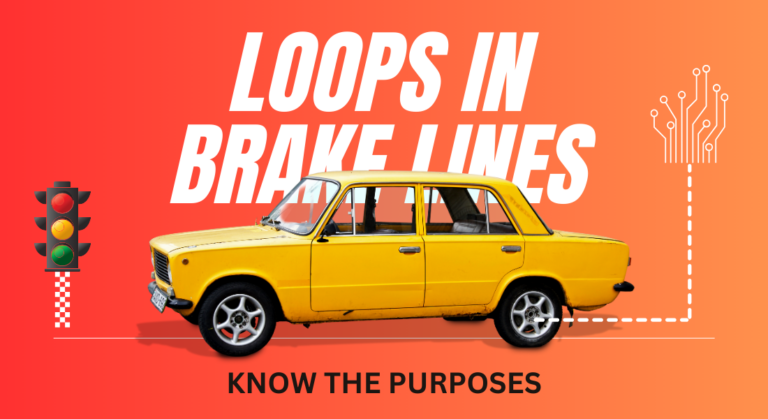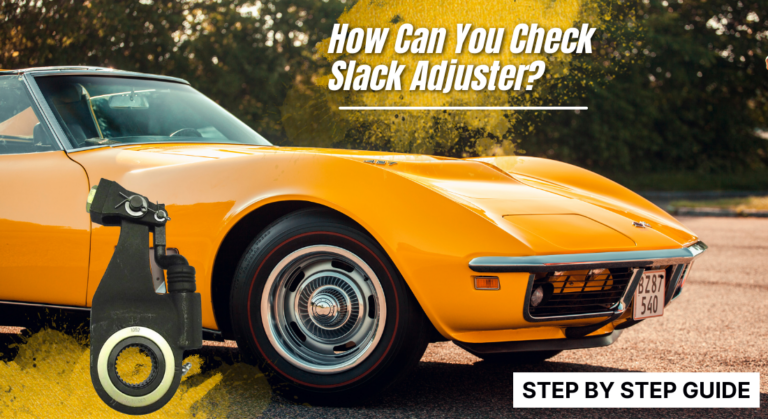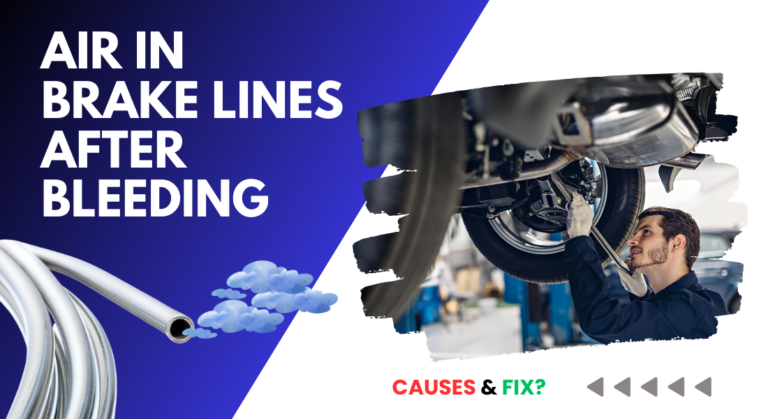Should You Bleed Brakes with Car On or Off? (The Right Way)
Frequent air bleeding from the car braking system ensures the efficient performance of a vehicle. Otherwise, your car steering will become too complicated. Although bleeding the brake is a straightforward process, many car owners want to know – should you bleed brakes with the car on or off. Why?
When bleeding your car’s brakes, it doesn’t matter whether the car is on or off. Specific brake systems rely on an engine-driven pump, requiring the engine to be on. However, to prioritize safety, performing the brake bleeding process with the engine off is advisable.
Opinions vary among mechanics regarding bleeding brakes with the car running. While some consider it acceptable, others firmly discourage the practice. This article looks into the benefits and drawbacks of bleeding brakes while the car is in operation or not.
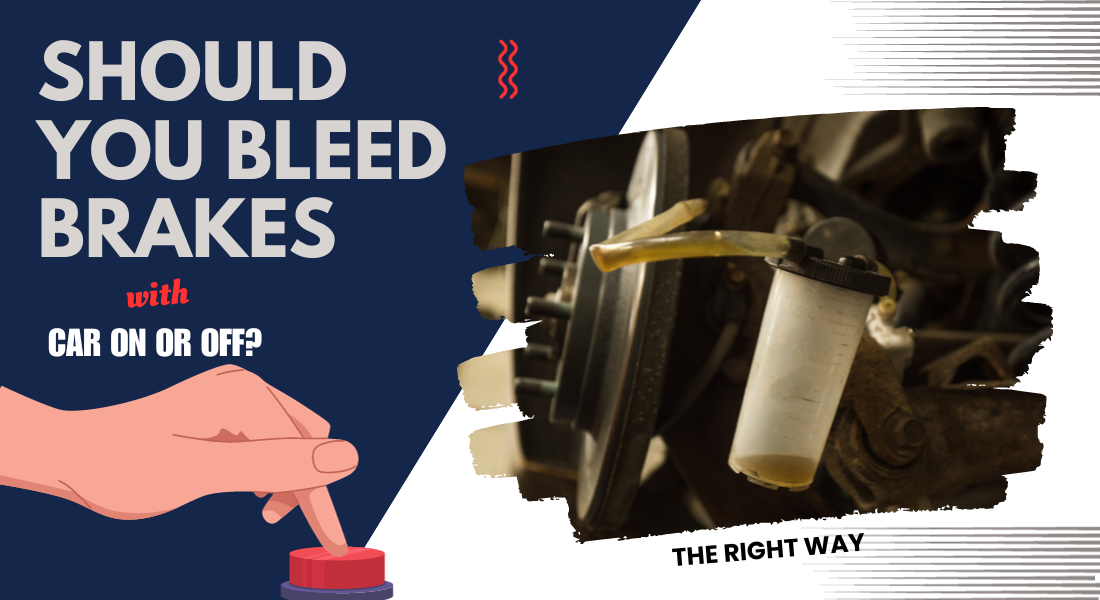
Should You Bleed Brakes with Car On or Off?
Whether to bleed brakes with the car on or off varies among individuals. Some find it easier with the engine running for smoother pedal pumping, while others prefer it off.
Deciding to keep the engine on or off hinges on your car’s specific type and model. Manual bleeding doesn’t necessitate an active engine.
For modern vehicles, ignition on (not necessarily running) is often sufficient due to the involvement of a scanner for ABS modules and electric parking brakes.
It’s recommended to seek professional help from a mechanic for safety and precision. They can tailor the process to your car’s brand, make, model, and year.
Read Also: Air in Brake Lines After Bleeding: What Causes & How to Fix?
What Happens If You Bleed Car Off?
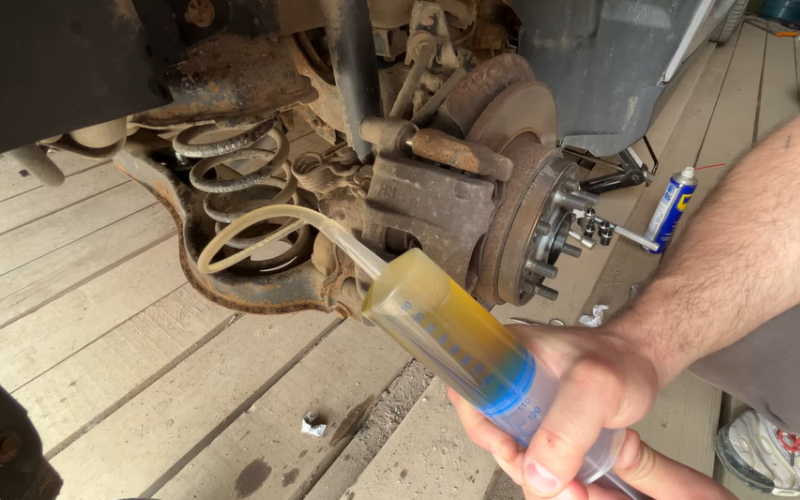
While bleeding the braking system with the car off might require a more manual and controlled approach, it offers several benefits. However, it has a few drawbacks.
Let’s explore them
Benefits
Controlled Environment
Bleeding the braking system with the car off provides a controlled environment for maintenance.
With the engine not running, there’s no risk of the engine overheating. Also you don’t have to worry about moving parts, hot surfaces, or exhaust fumes. This can enhance the safety of the person performing the bleeding process.
Reduced Noise and Vibration
Running engines can create noise and vibration, which might make it harder to communicate with a helper during the bleeding process.
Bleeding with the car off eliminates engine noise, allowing for clearer communication and better concentration.
Minimized Risk of Fluid Contamination
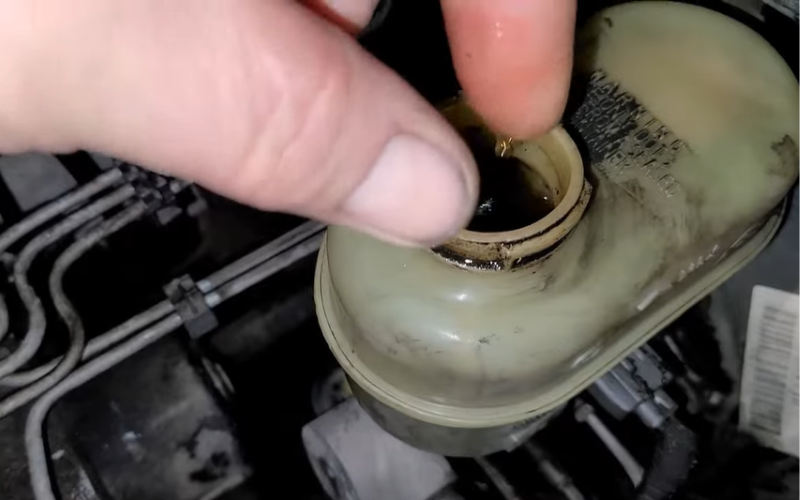
Brake fluid might spill or splash during the bleeding process. With the car off, there’s no risk of the fluid contacting hot engine components. As a result, fluid evaporation, degradation, or contamination doesn’t happen.
Additionally, it helps maintain the brake fluid’s quality, which is crucial for effective brake performance.
Read Also: No Brake Pressure after Bleeding – Why & How To Fix It?
Methodical Process
Bleeding the brakes with the car off often requires a more systematic approach.
This can lead to a more thorough bleeding process, encouraging careful attention to each brake line, caliper, or wheel cylinder. Such diligence is essential for removing all air bubbles from the system.
No Engine-Driven Vacuum-Assisted System
Some older vehicles might need engine-driven brake boosters. In such cases, the only option is to bleed the brakes with the car off.
This method allows for a controlled and manual approach, where the brake pedal is manually pumped to create hydraulic pressure.
Maintenance and Repairs in Certain Situations
There might be scenarios where bleeding with the car off is more practical. For instance, when performing brake system maintenance or repairs in a confined space, bleeding with the car off could be safer. It helps prevent unnecessary exposure to exhaust fumes and hot engine components.
Drawbacks
Limited Hydraulic Pressure
Bleeding brakes with the car off results in limited hydraulic pressure. Thus, you will face difficulty moving air bubbles out of the brake lines effectively.
Manual Effort Required
Without engine-assisted pressure, manual Effort is required to build hydraulic pressure by pumping the brake pedal. It can be time-consuming and strenuous.
Inaccurate Brake Feel
The absence of engine-driven brake boosters leads to an inaccurate brake pedal feel compared to real-world driving conditions.
Lack of Electronic Assistance
Some modern vehicles’ electronic brake control systems might require the car to be on for proper bleeding. It potentially affects the efficiency of the process.
Read Also: Why Does Brake Pedal Goes to Floor after Bleeding?(4 Causes)
What Happens If You Bleed Car On?
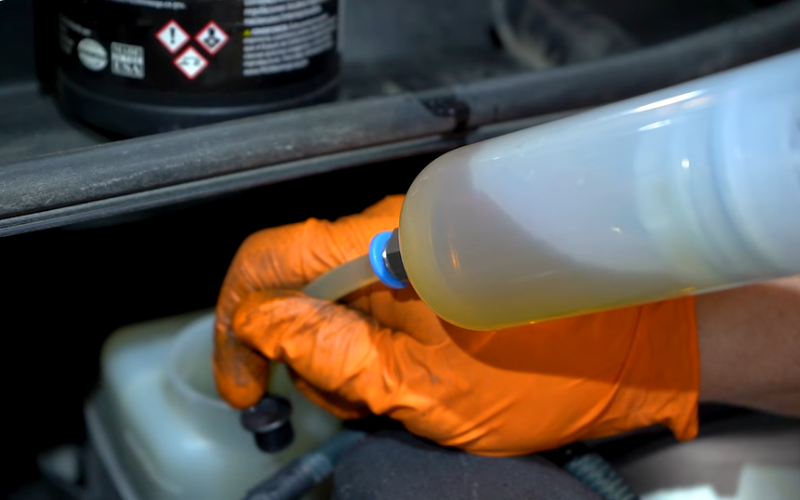
The outcome of bleeding brakes while the engine runs, depends on your specific car type and model. In modern cars, there might not be any issues.
However, in vehicles that demand manual bleeding, there’s a potential risk to the person conducting the procedure, as their safety could be compromised. Engaging in any tasks within a running vehicle is generally discouraged due to safety concerns.
Bleeding air from a car’s braking system with the car on offers some potential advantages and disadvantages. Let’s find them out.
Drawbacks
Risk of Engine Overheating
Running the engine while bleeding the brakes can lead to increased heat generation. If the engine is already operating at high temperatures or the cooling system isn’t functioning optimally, bleeding with the car on could exacerbate the risk of engine overheating. This can lead to potential damage to the engine and related components.
Exhaust Fumes Exposure
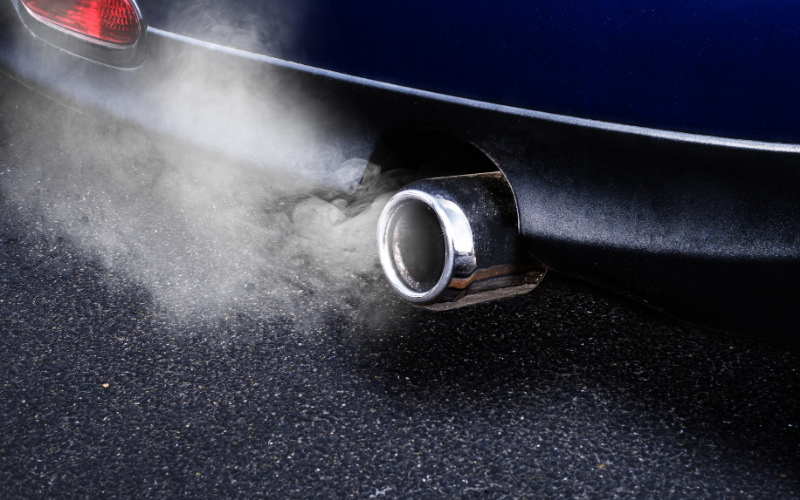
Bleeding the brakes with the car on might expose individuals to exhaust fumes, especially if the vehicle is not adequately ventilated.
In poorly ventilated areas, inhaling exhaust gasses can harm health and cause dizziness, nausea, and respiratory discomfort. This risk is especially significant when working on the vehicle indoors or in enclosed spaces.
Noise and Vibration Disturbance
Running engines generate noise and vibrations, impacting the communication between the person performing the bleeding and their helper.
The noise might make it challenging to hear instructions or detect changes in the brake pedal feel, potentially affecting the accuracy of the bleeding process.
Inaccurate Brake Pedal Feel
While engine-assisted pressure enhances the bleeding process, it can also create a brake pedal feel that doesn’t accurately reflect real-world driving conditions.
The engine-driven brake booster can mask potential issues in the braking system. This way, it becomes harder to identify problems like spongy brakes or uneven pressure distribution.
Electronic Brake Control Systems
Modern vehicles often feature electronic brake control systems like ABS and ESC. These systems might require the car’s engine to run correctly.
Bleeding the brakes with the car on ensures that these electronic systems are powered, allowing for complete air removal from all components.
However, this dependency on electronic systems could complicate the process if there are issues with the vehicle’s electrical system.
Fuel Consumption
Running the engine consumes fuel, and bleeding the brakes with the car on can contribute to unnecessary fuel consumption, mainly if the bleeding process takes an extended time.
Benefits
Enhanced Hydraulic Pressure
Bleeding brakes with the car to utilize the engine-driven brake booster. It generates higher hydraulic pressure for more efficient air removal.
Faster Air Removal
The engine’s assistance expedites the movement of air bubbles toward the brake fluid reservoir, speeding up the bleeding process.
Realistic Brake Pedal Feel
With the engine running, the brake pedal closely mirrors actual driving conditions. It enables accurate assessment and adjustments.
Optimal Electronic System Function
Modern electronic brake control systems like ABS and ESC require the car to be on for proper operation. It ensures comprehensive air removal from all components.
Read Also: How To Flush and Bleed Brake Systems?(Step By Step)
FAQs
Can bleed brakes with the car on affect brake fluid quality?
Yes, it can affect the brake fluid quality. If not done properly, excessive heat generated by the engine might impact brake fluid quality, necessitating careful monitoring.
Do bleeding brakes with the car on use more fuel?
Yes, bleeding with the car consumes fuel, which might be a consideration for efficiency-conscious individuals.
Can I bleed brakes with the car off in modern vehicles with electronic systems?
Yes, but some electronic brake control systems might require the car to be on for proper operation.
Sum Up
So, the debate should you bleed brakes with the car on or off? is closed.
Whether bleeding with the car on or off, following proper procedures is crucial. Also, using suitable tools, and ensuring the brake fluid’s quality is necessary. Such acts help maintain effective brake performance and safety on the road.
It’s crucial to evaluate the specific circumstances, prioritize safety. Moreover, choose the method that aligns with the vehicle’s requirements and the maintenance environment.
If you need more clarity about the bleeding process, seeking professional guidance or referring to the vehicle’s manual is recommended.

Meet Zayan, the mechanical genius behind the highly acclaimed brakes problems and solutions website. With over a decade of hands-on experience in the automotive industry, Zayan has become a trusted authority in the realm of brake systems.
His passion for cars, coupled with his expertise in solving complex brake-related issues, has earned him a devoted following of car enthusiasts, mechanics, and everyday drivers seeking reliable guidance.



